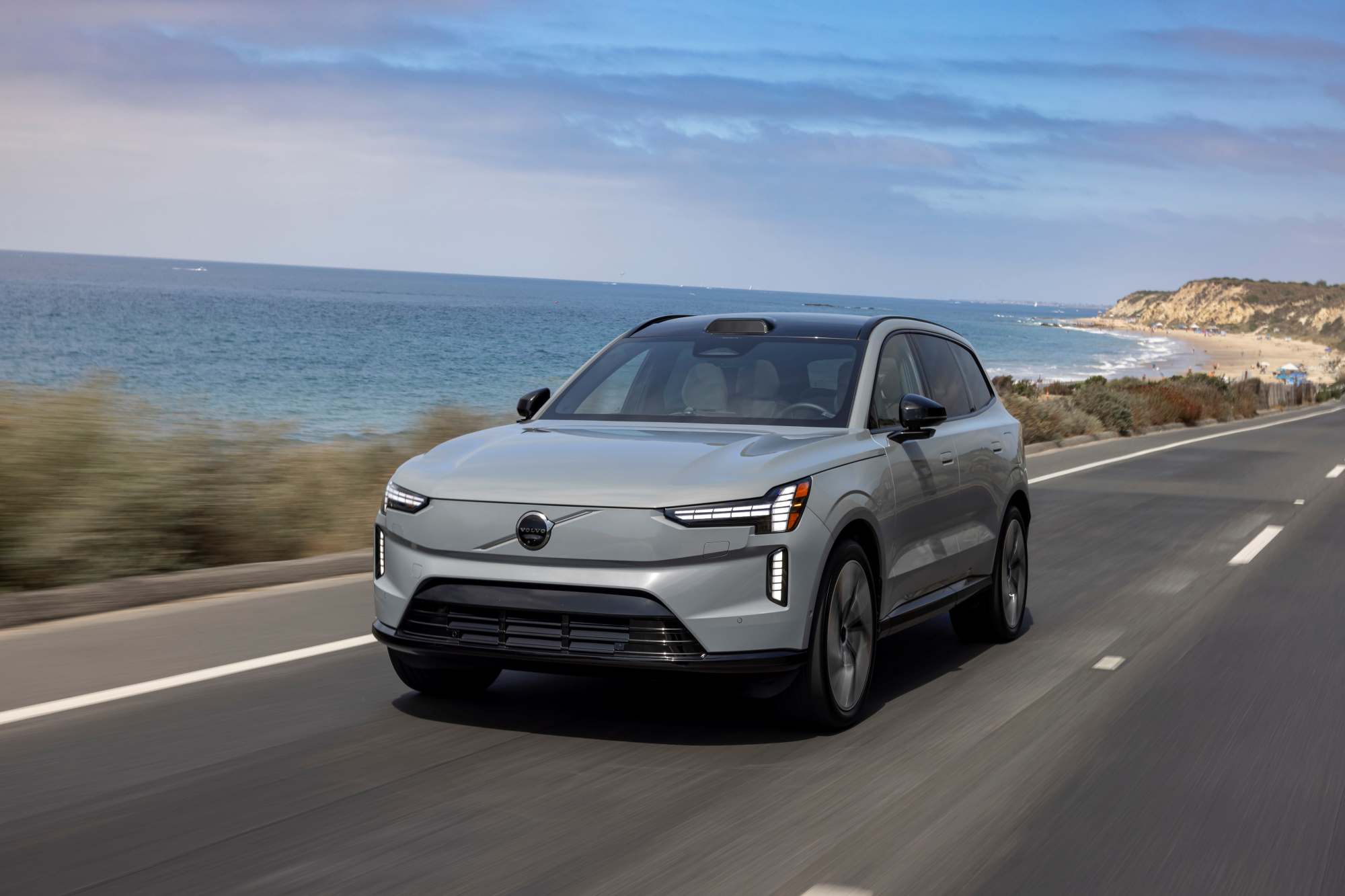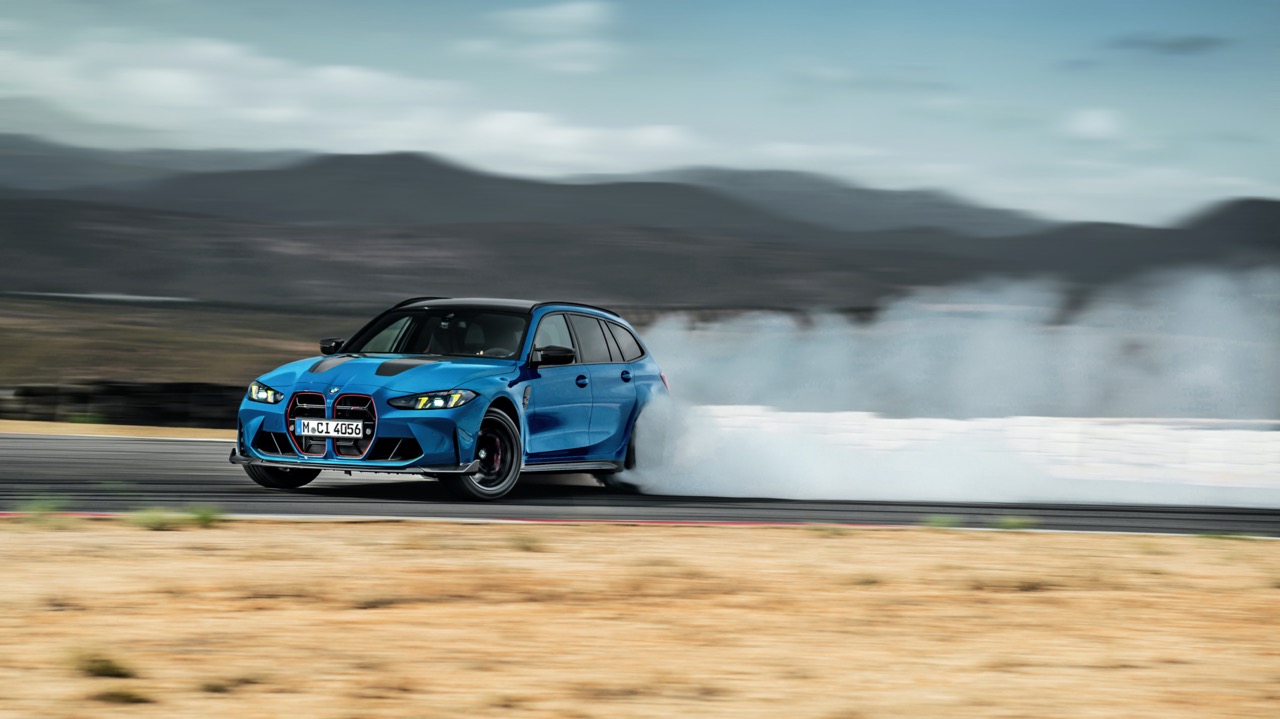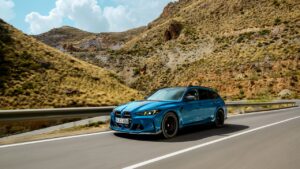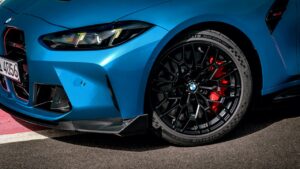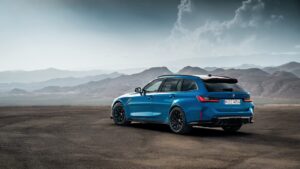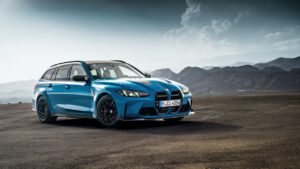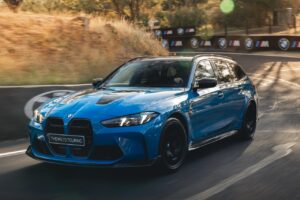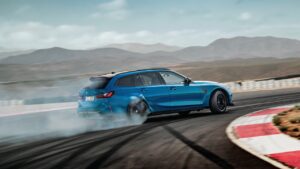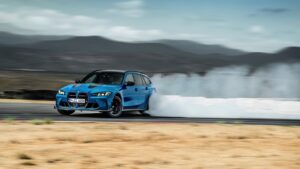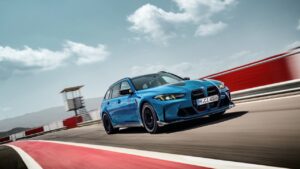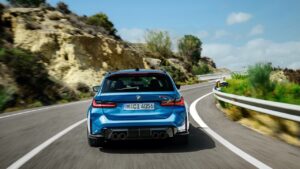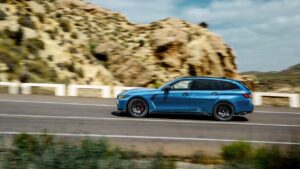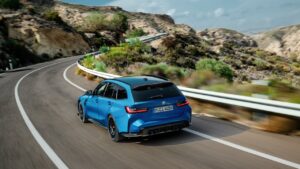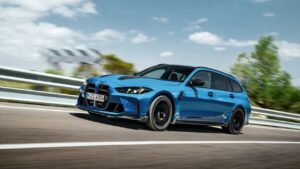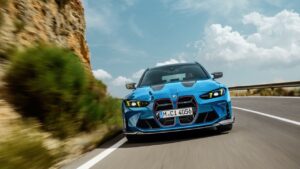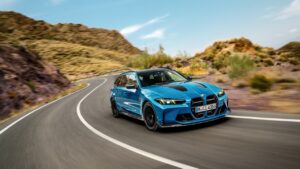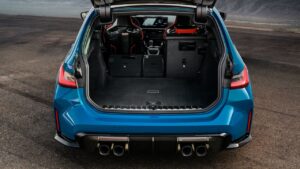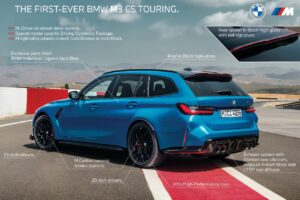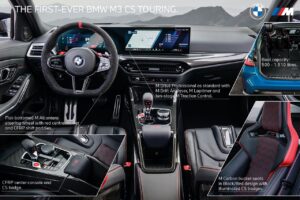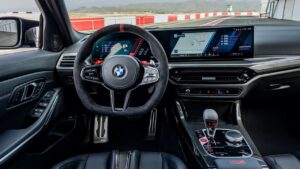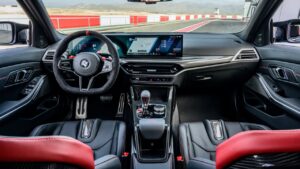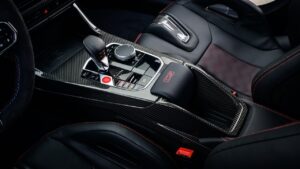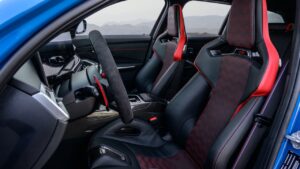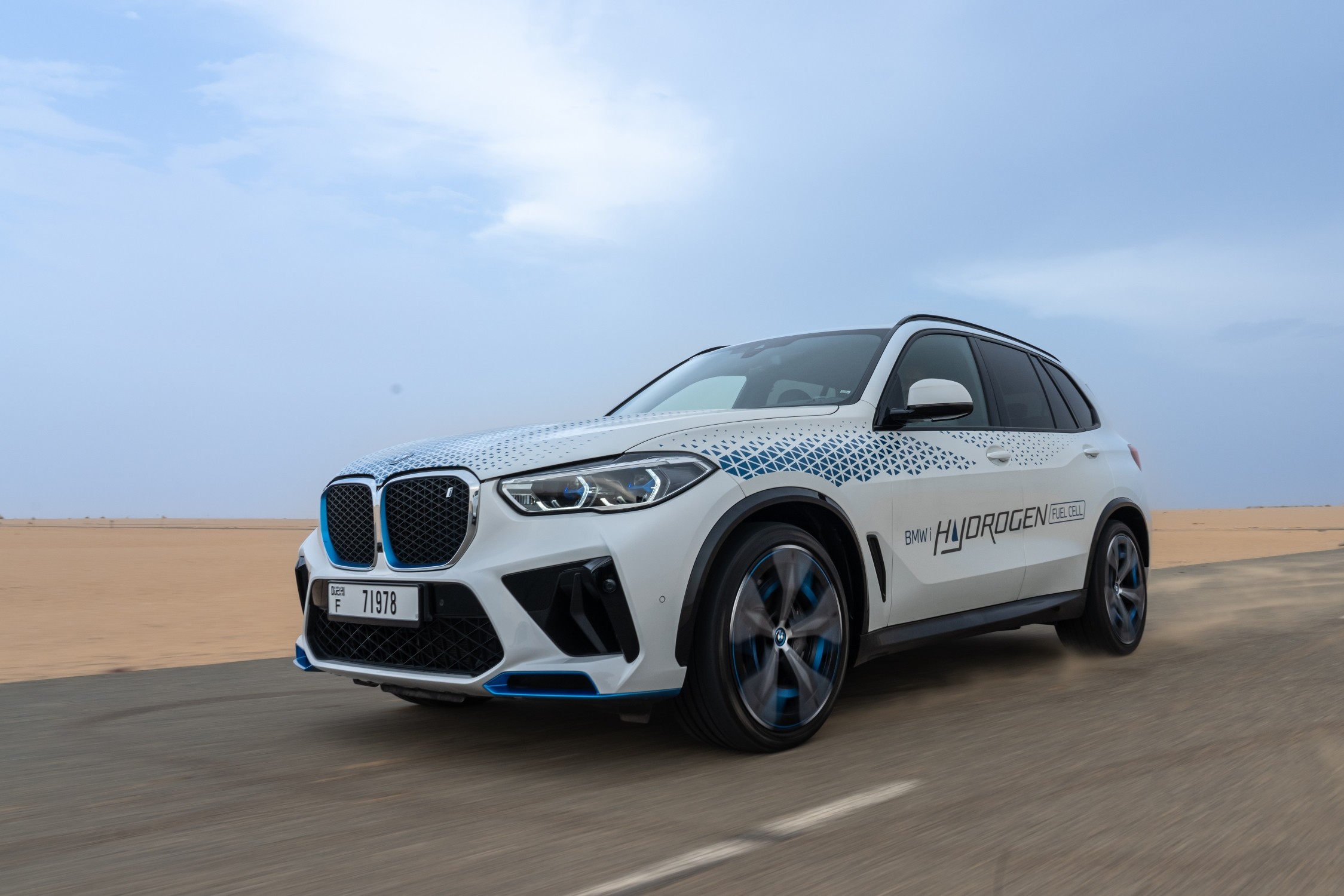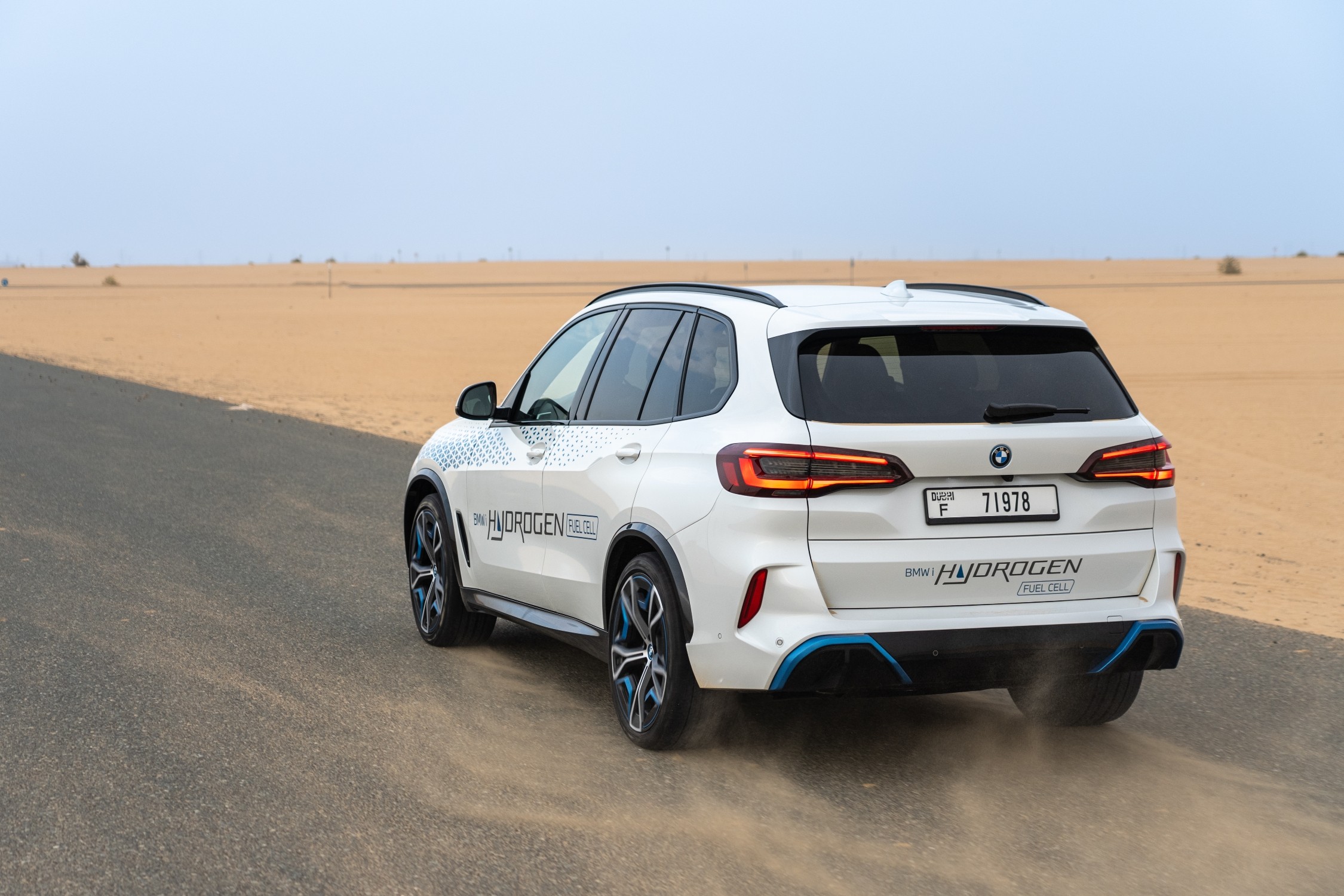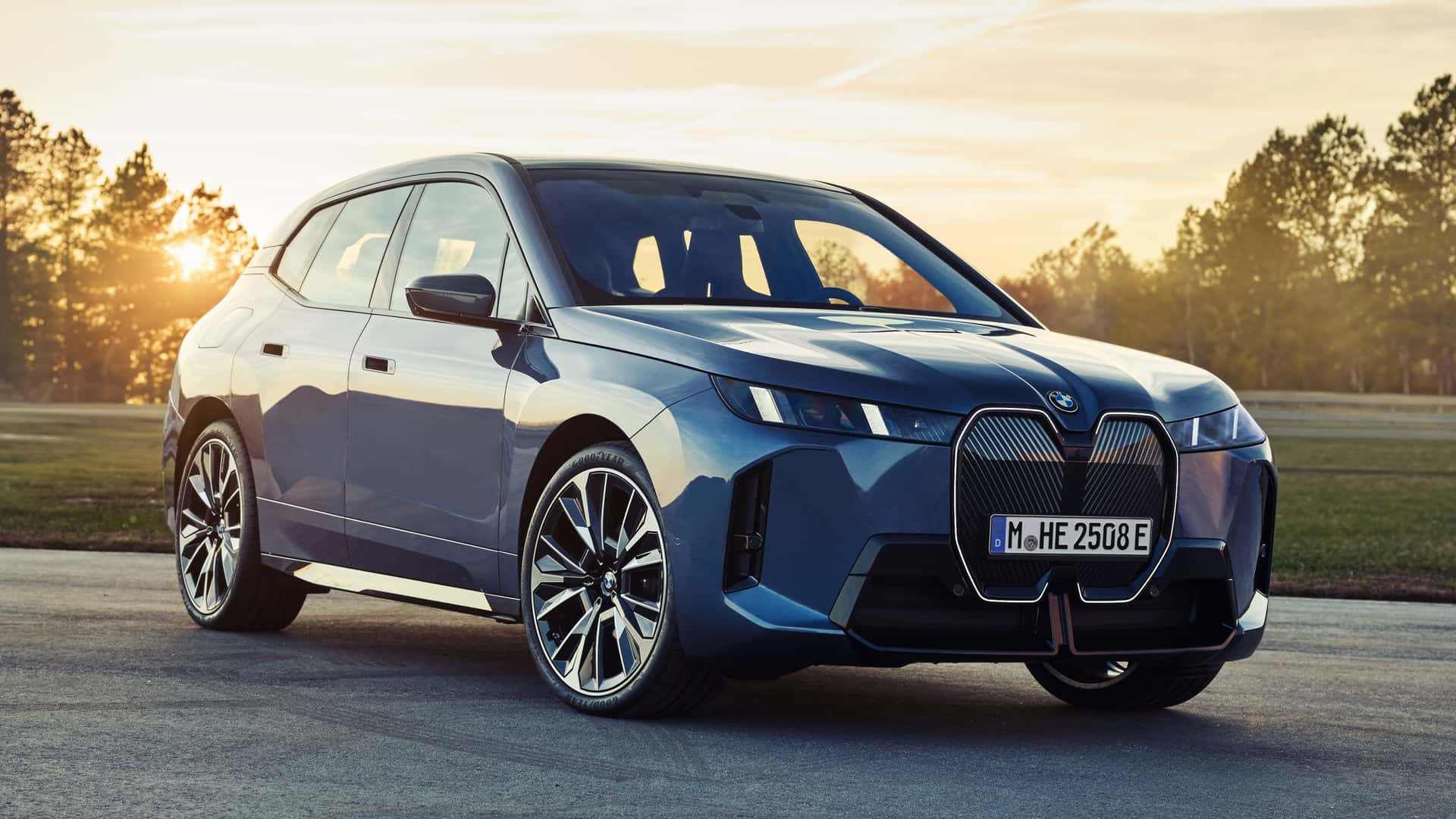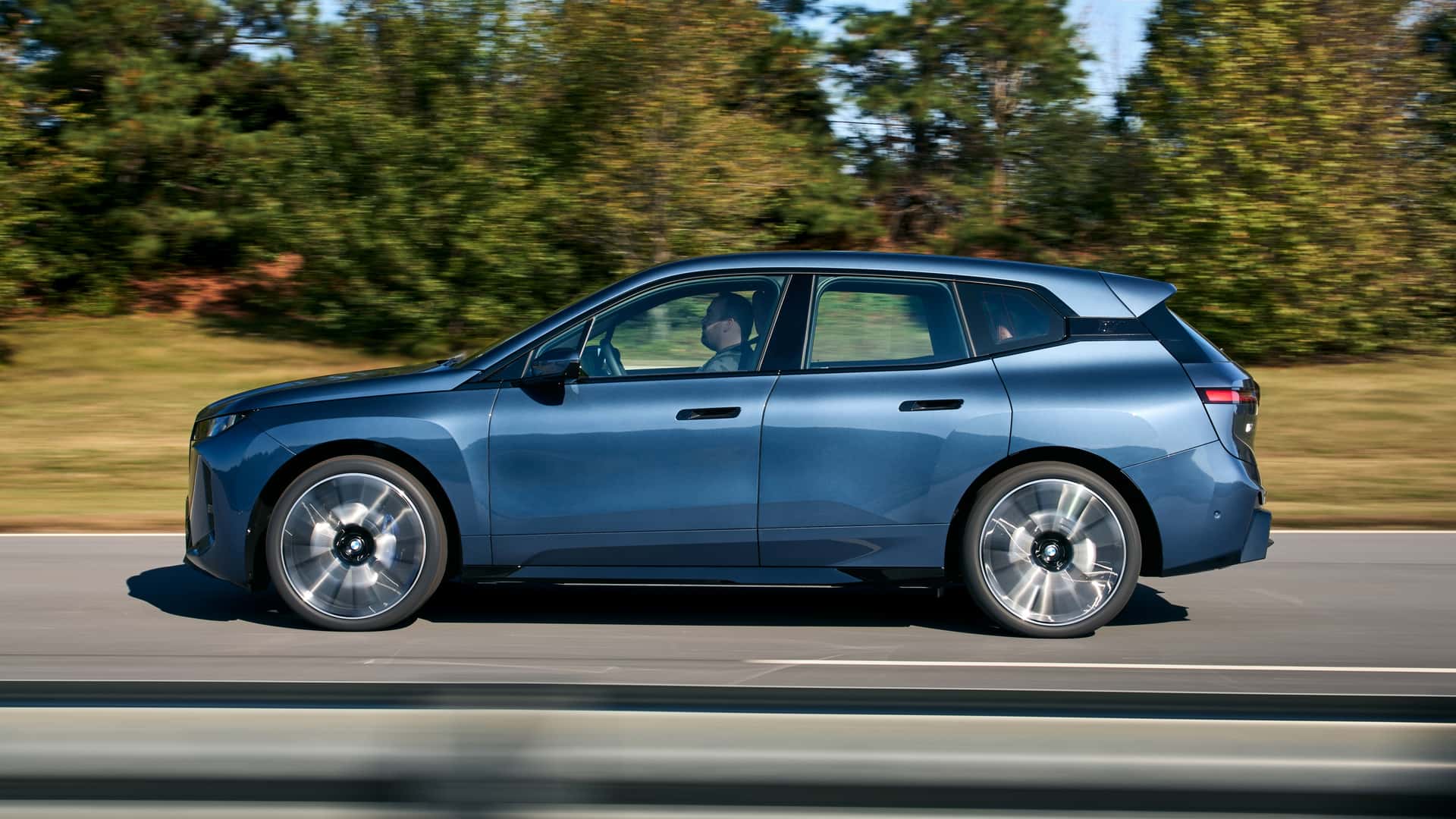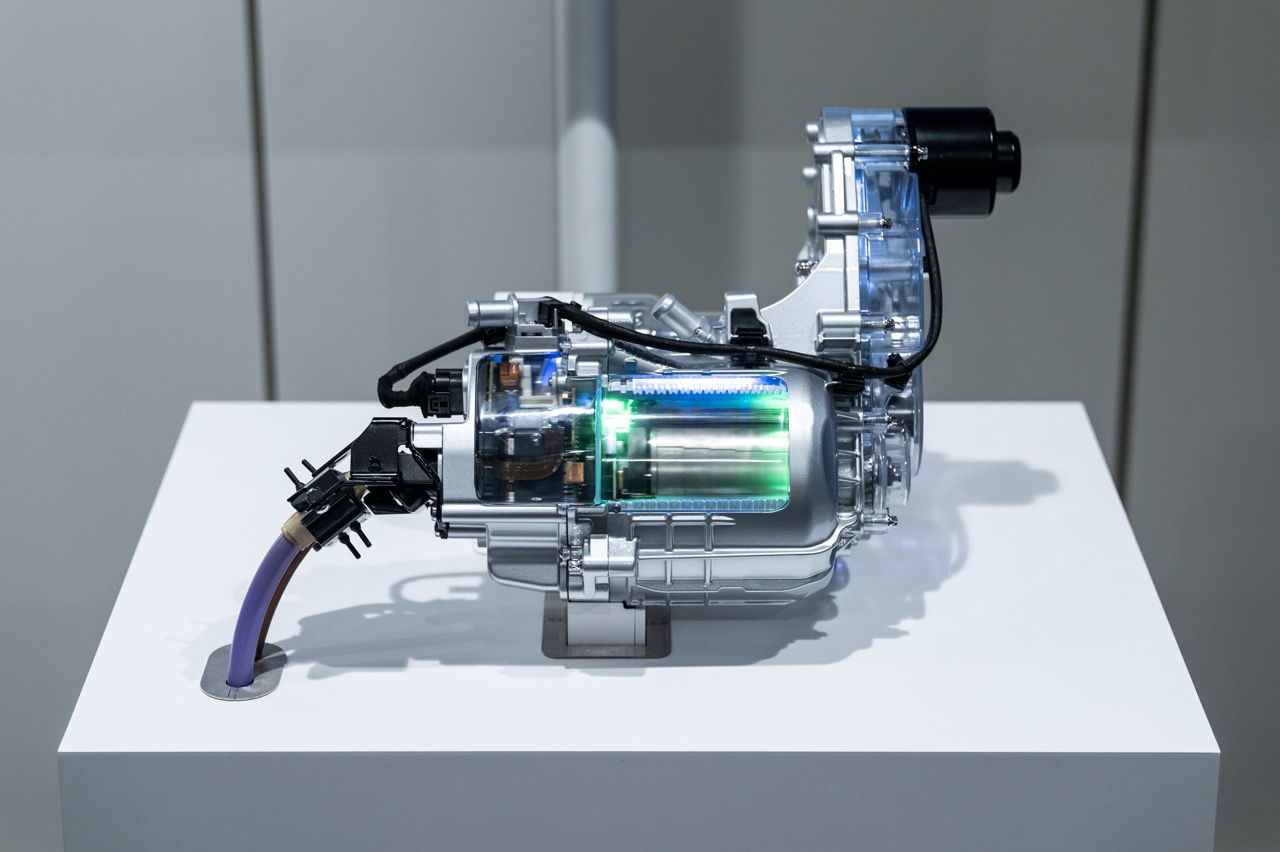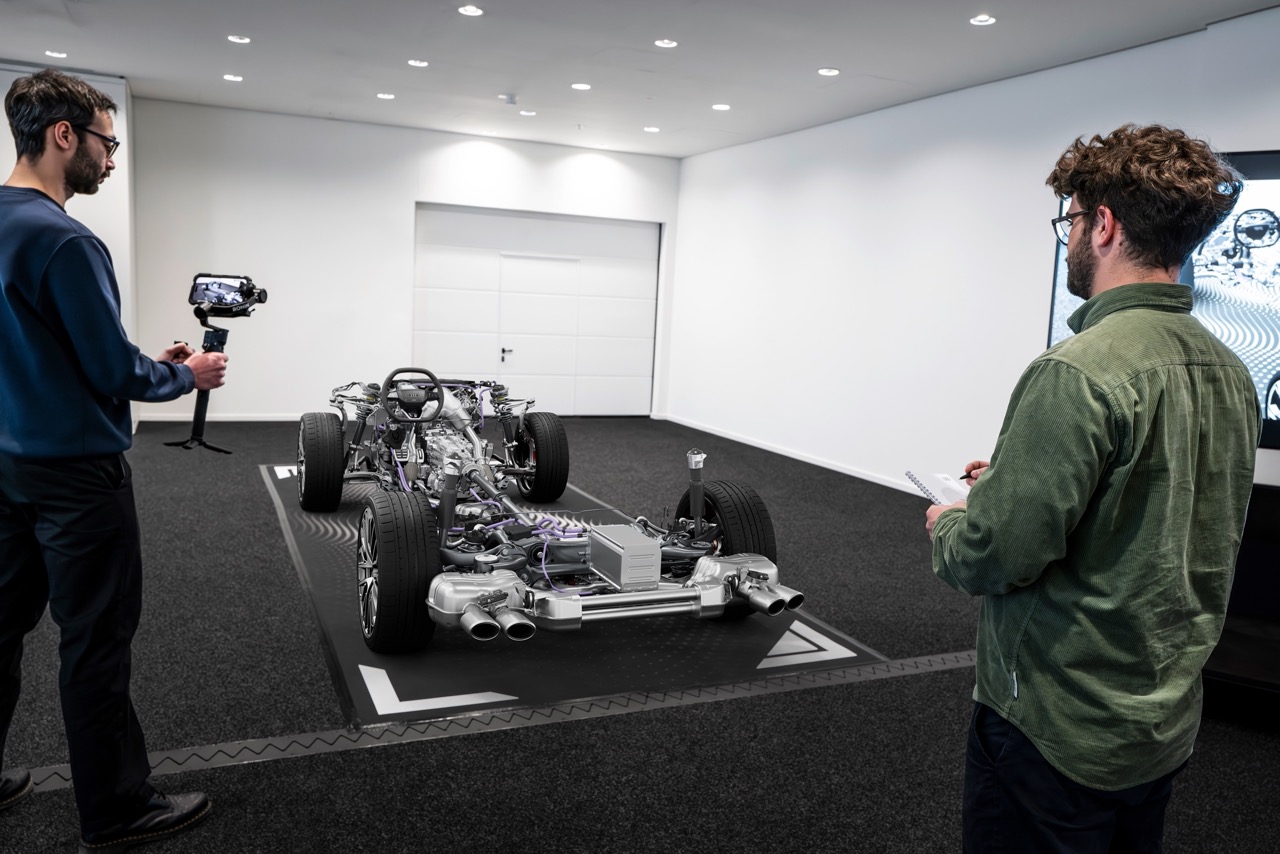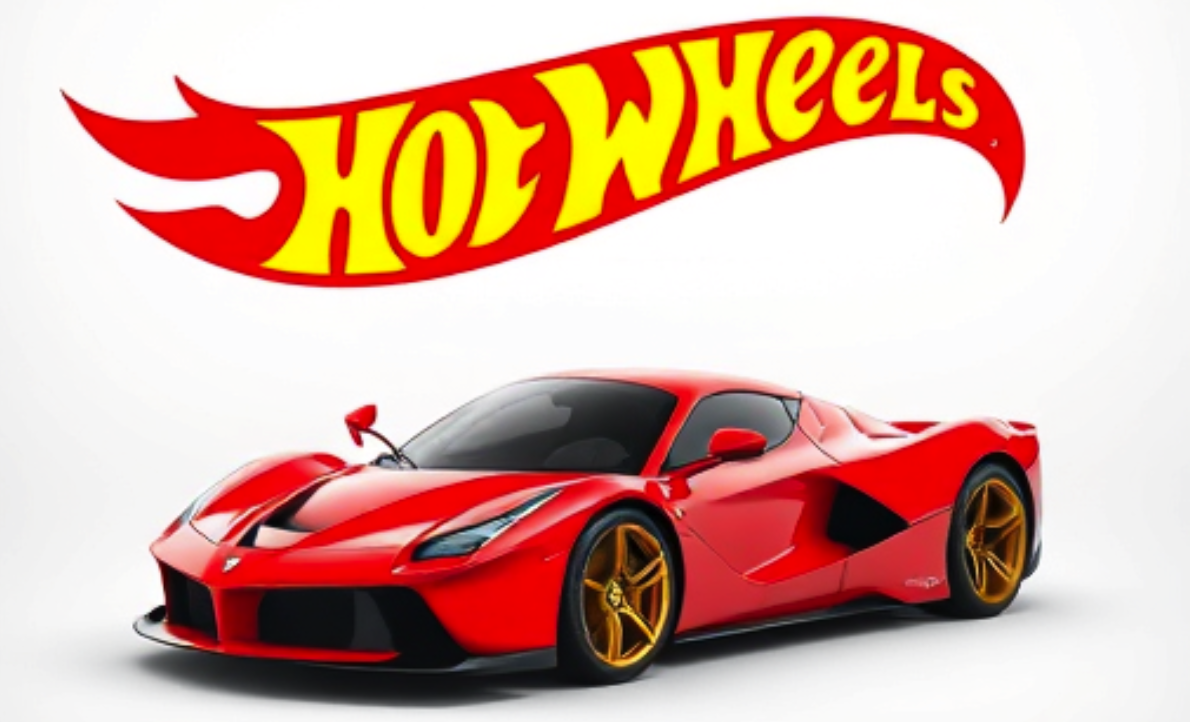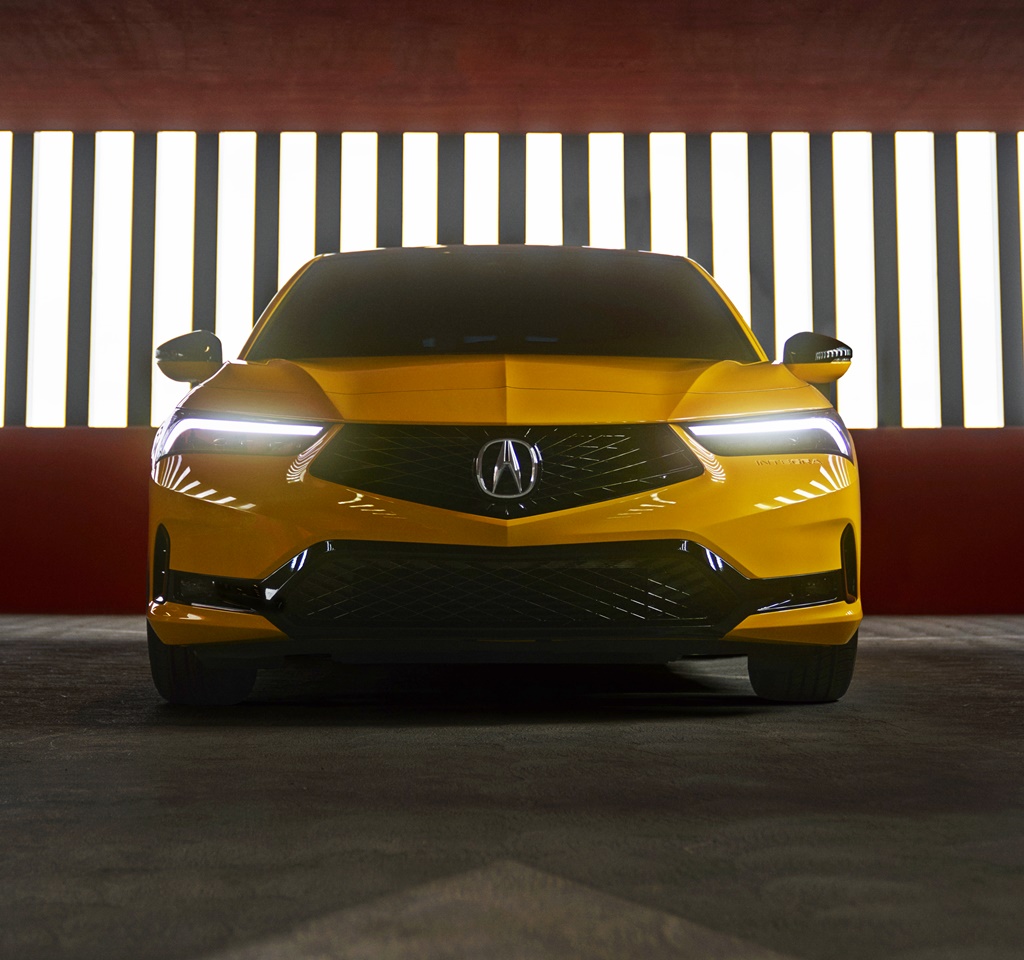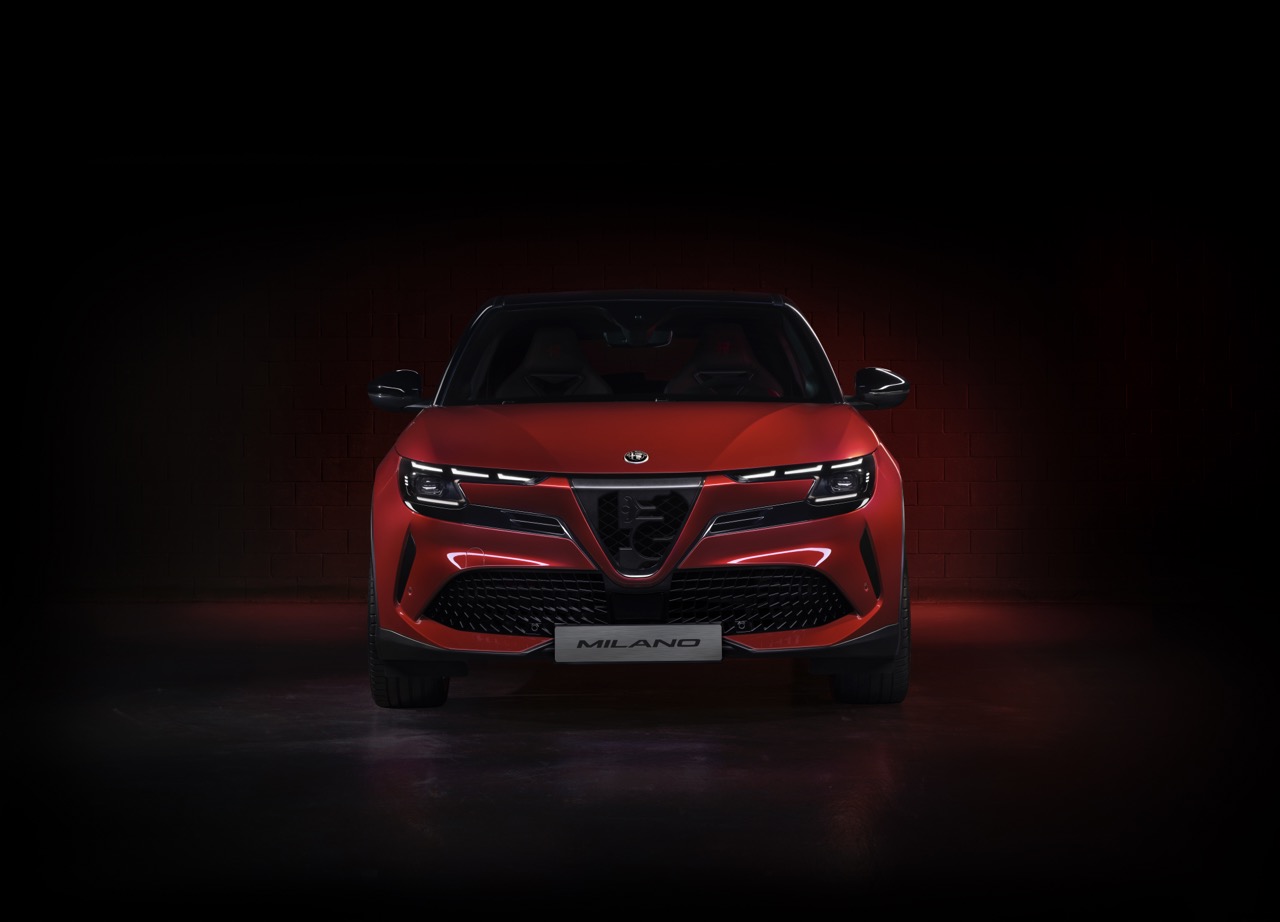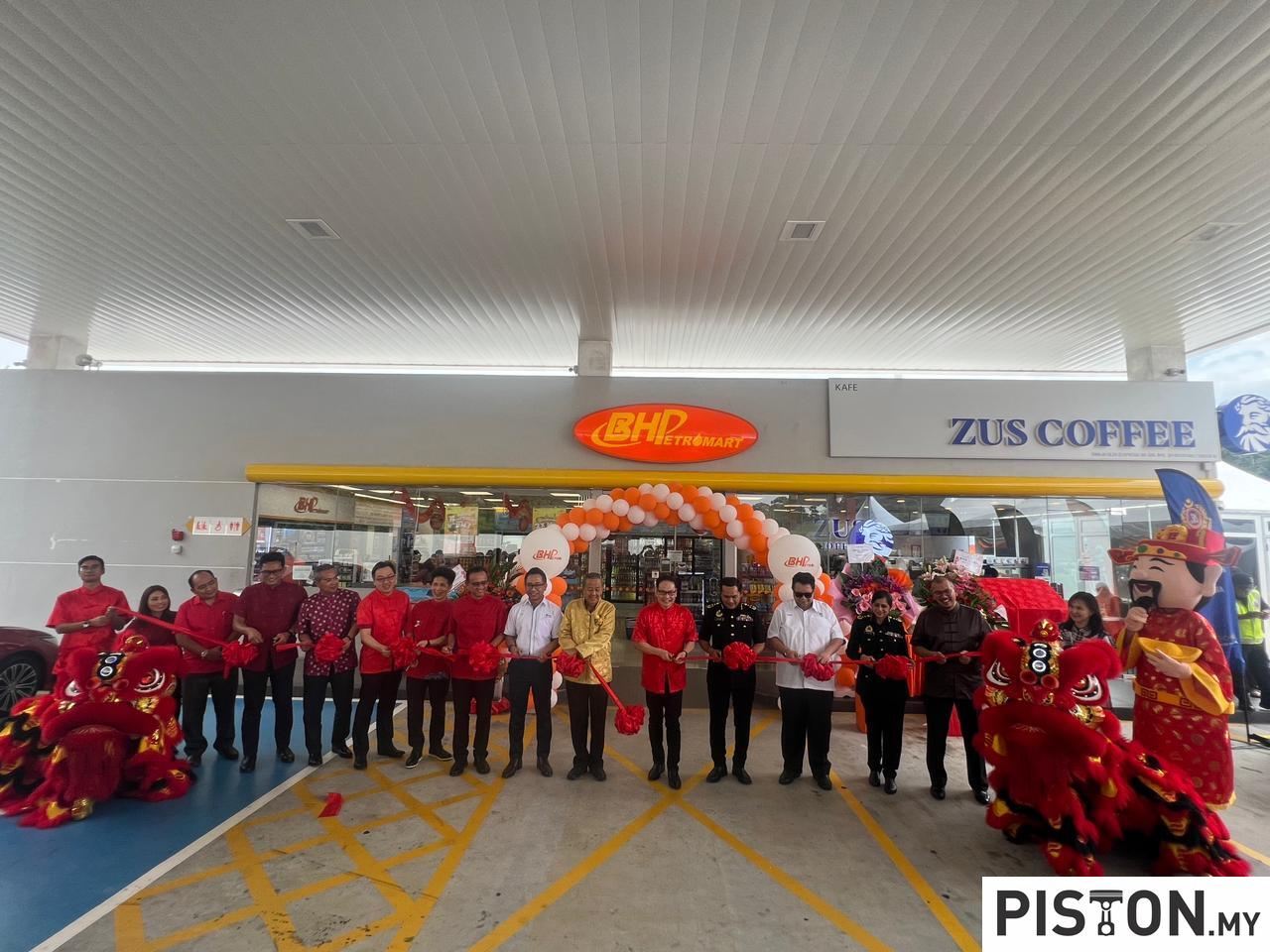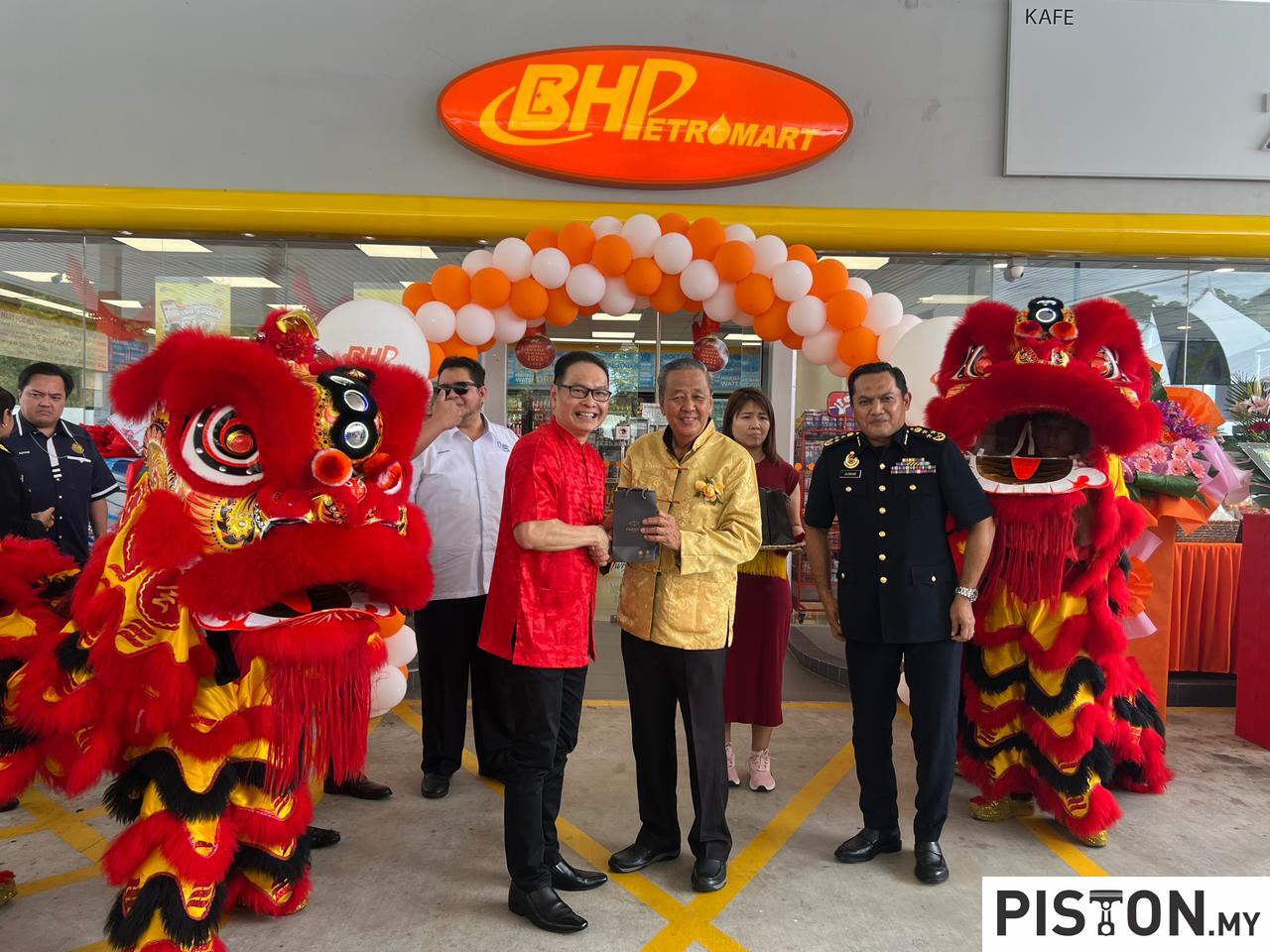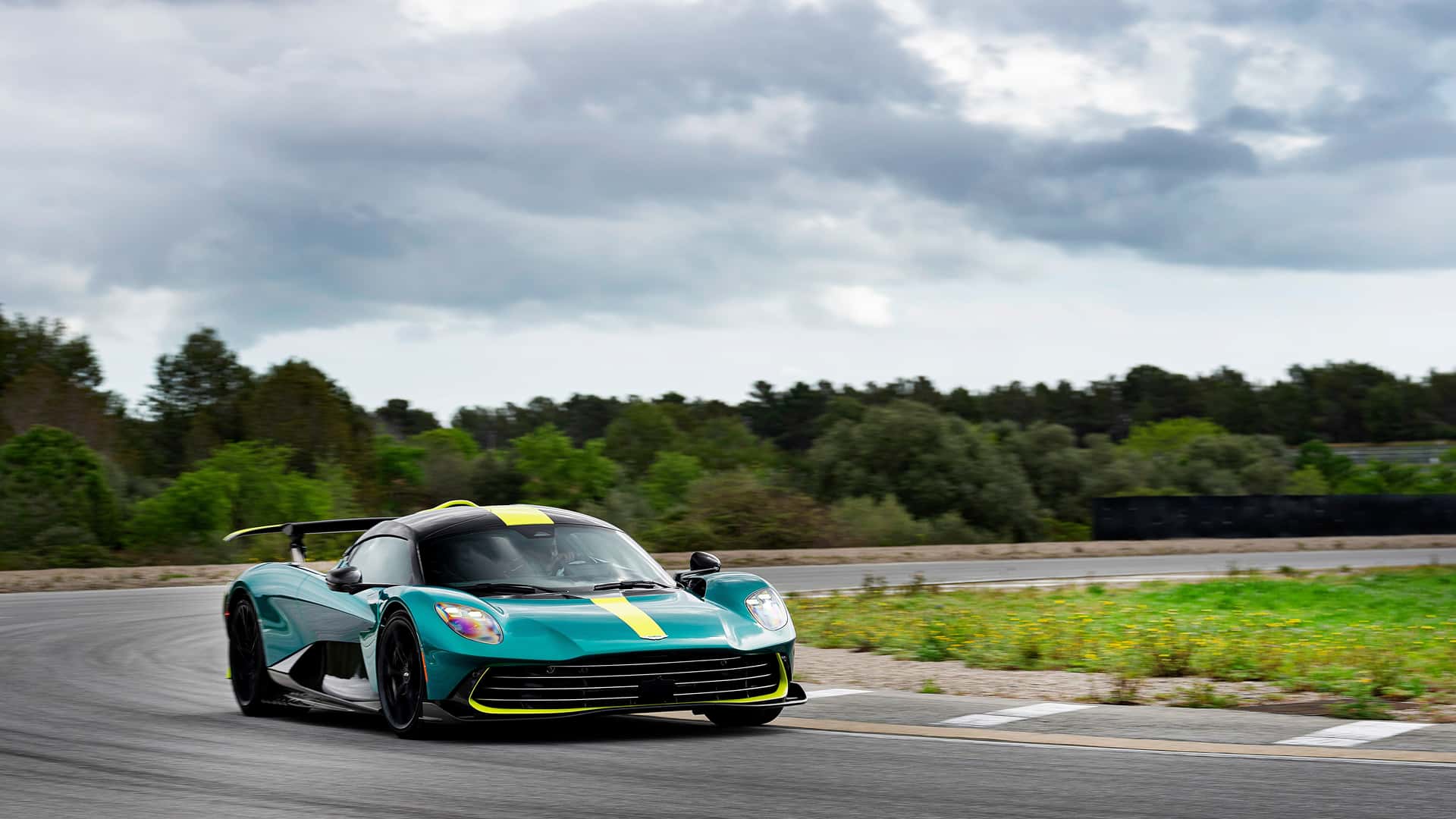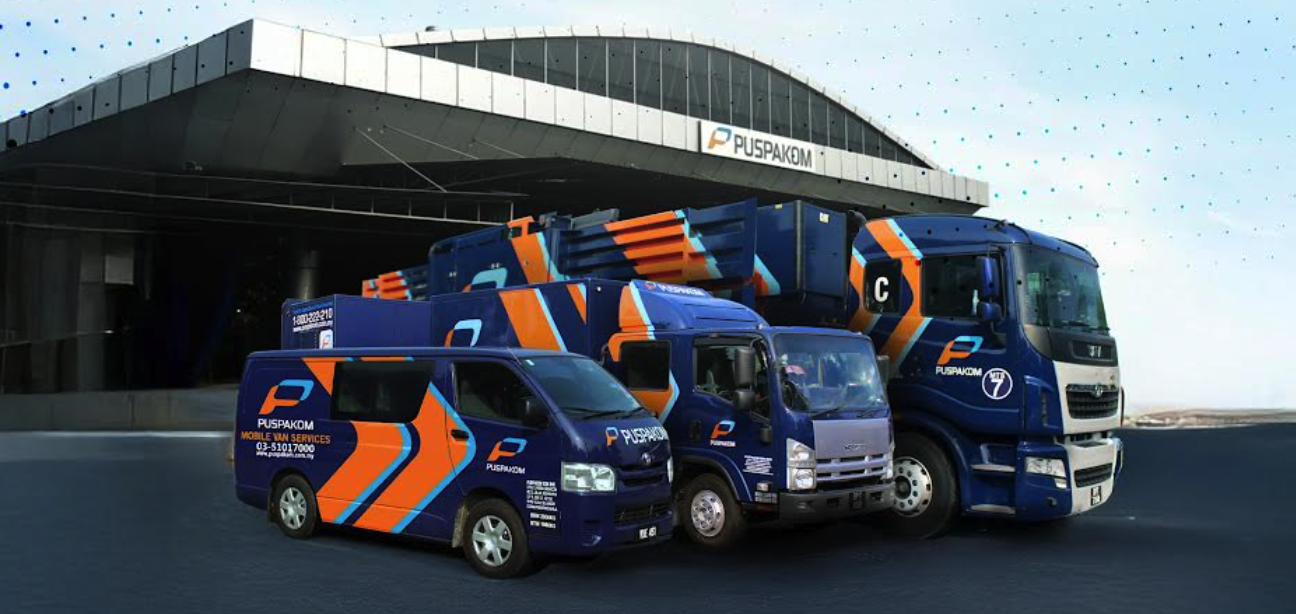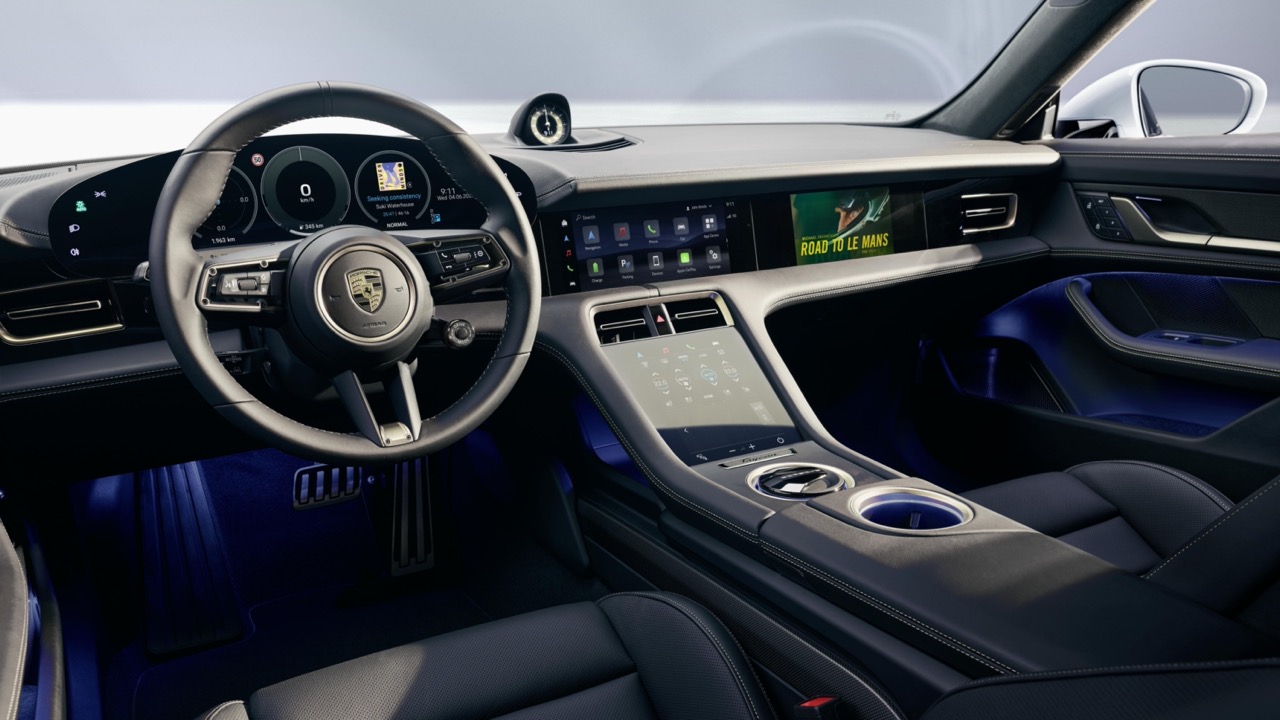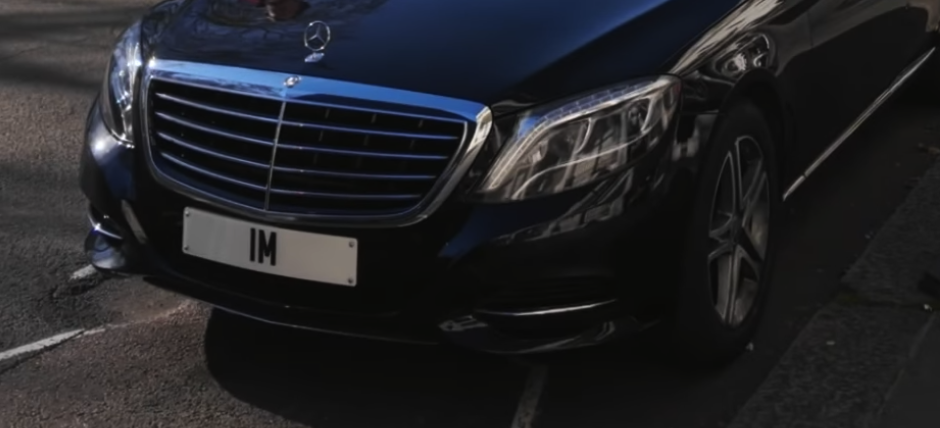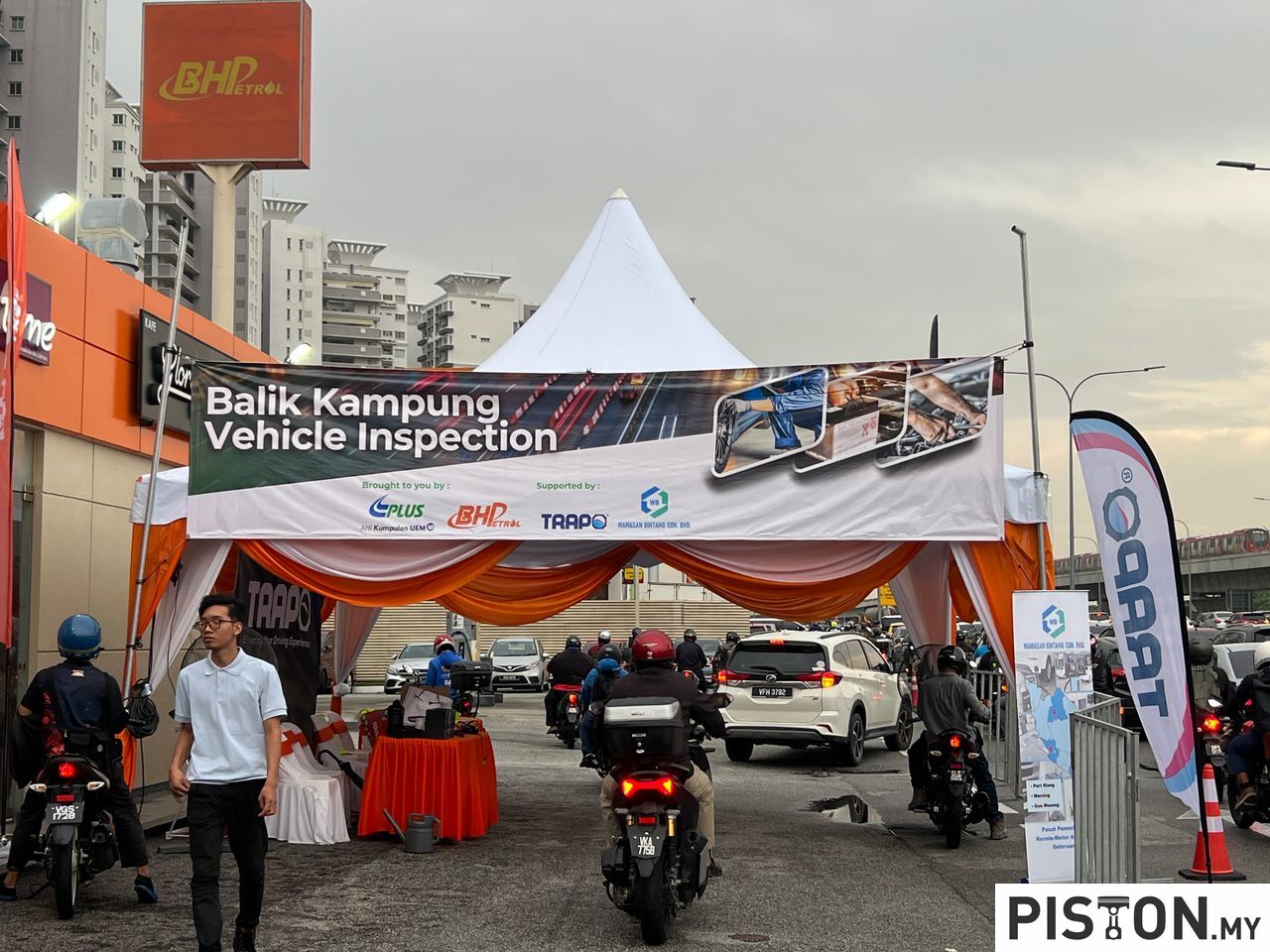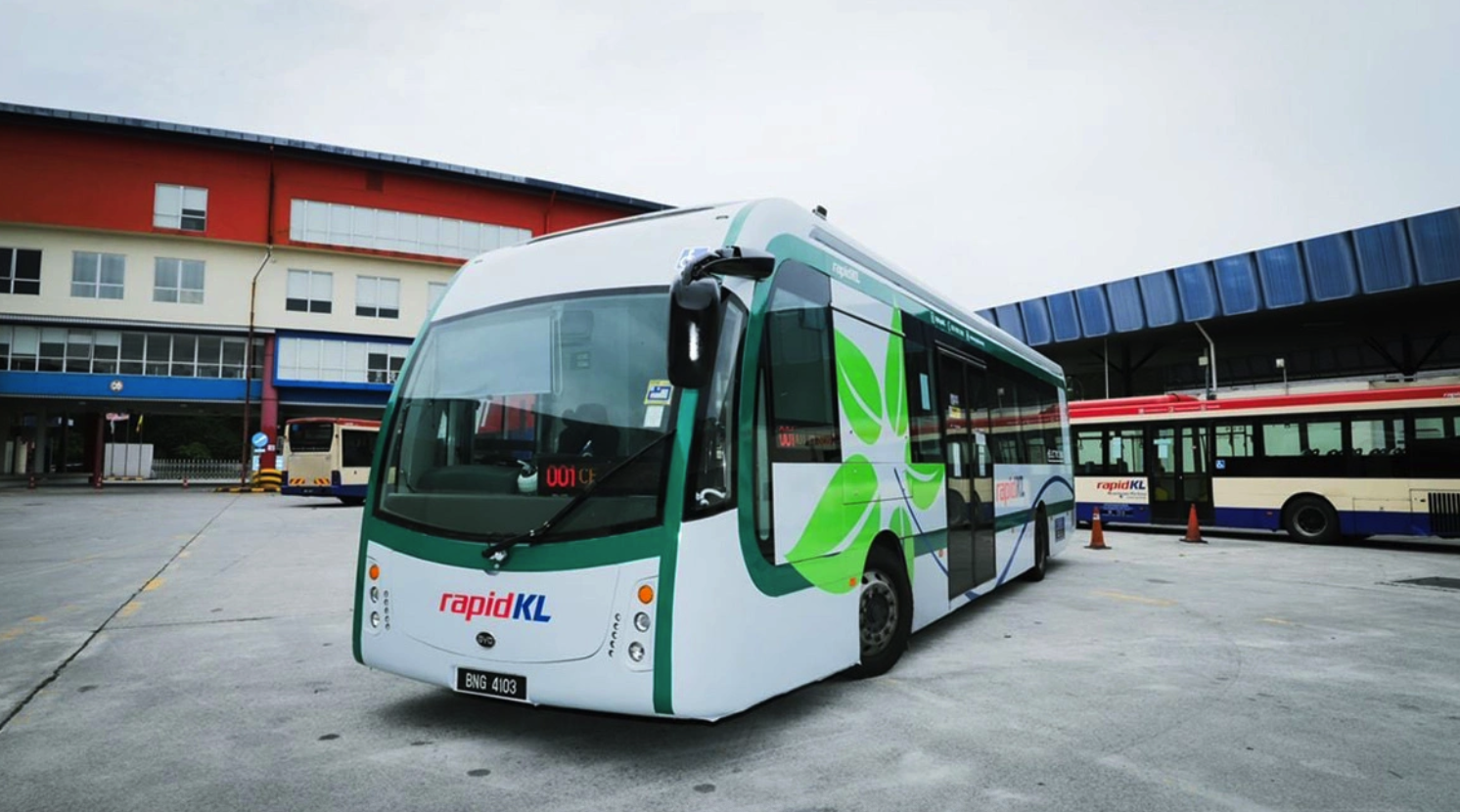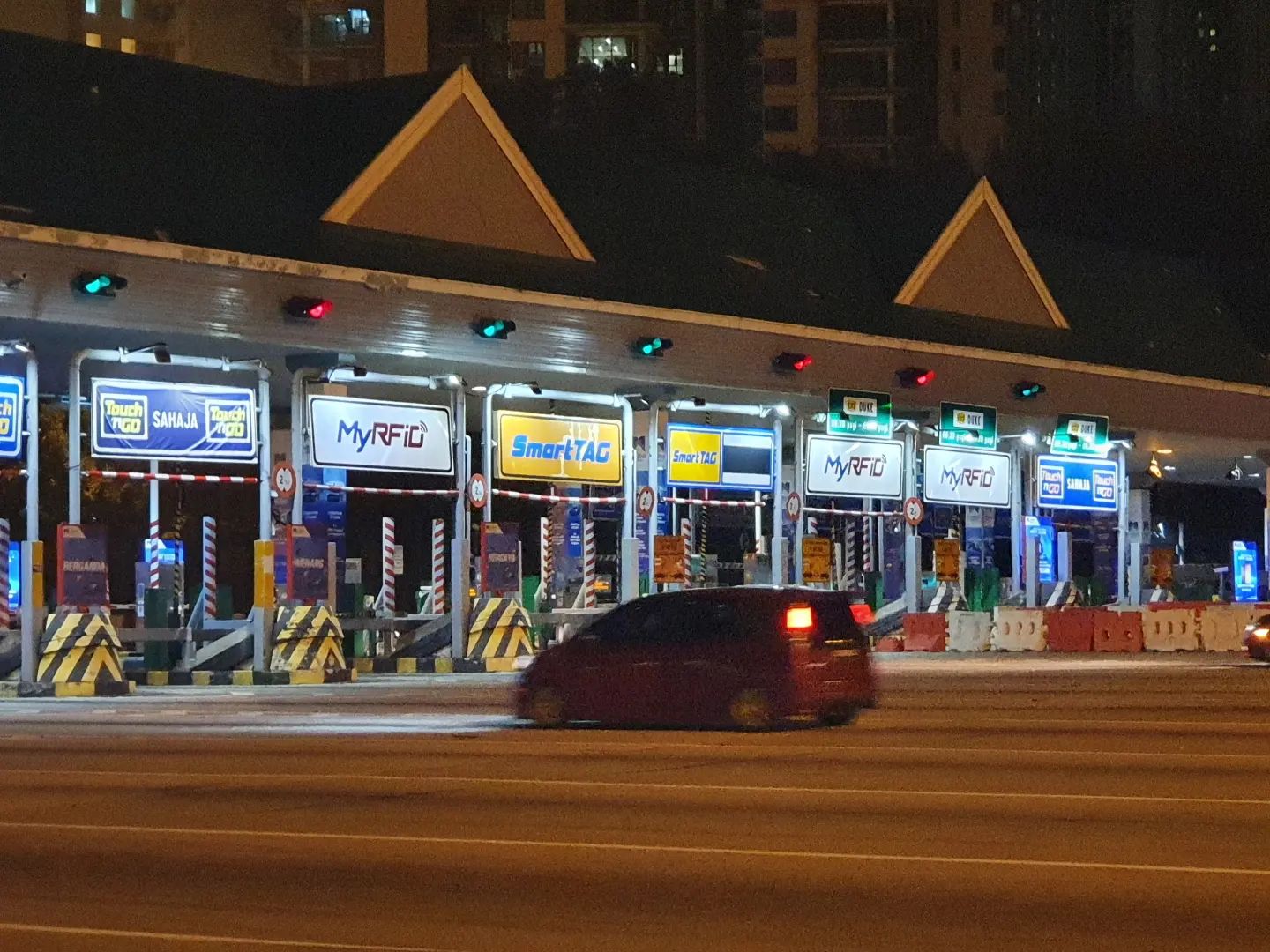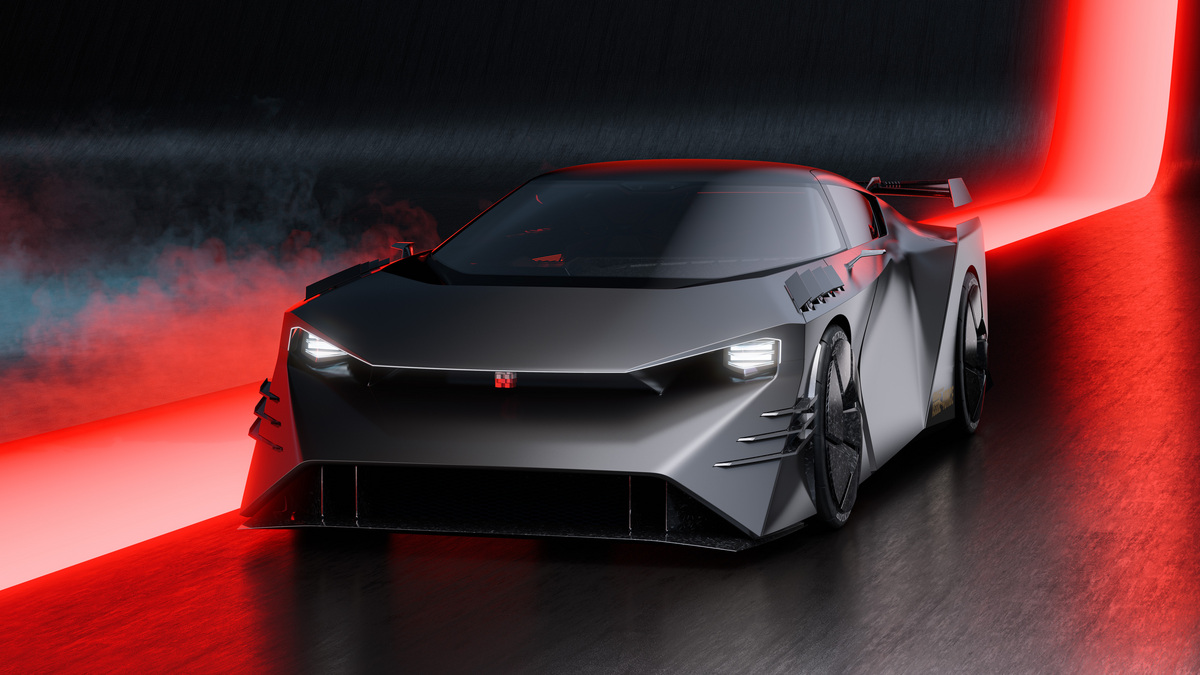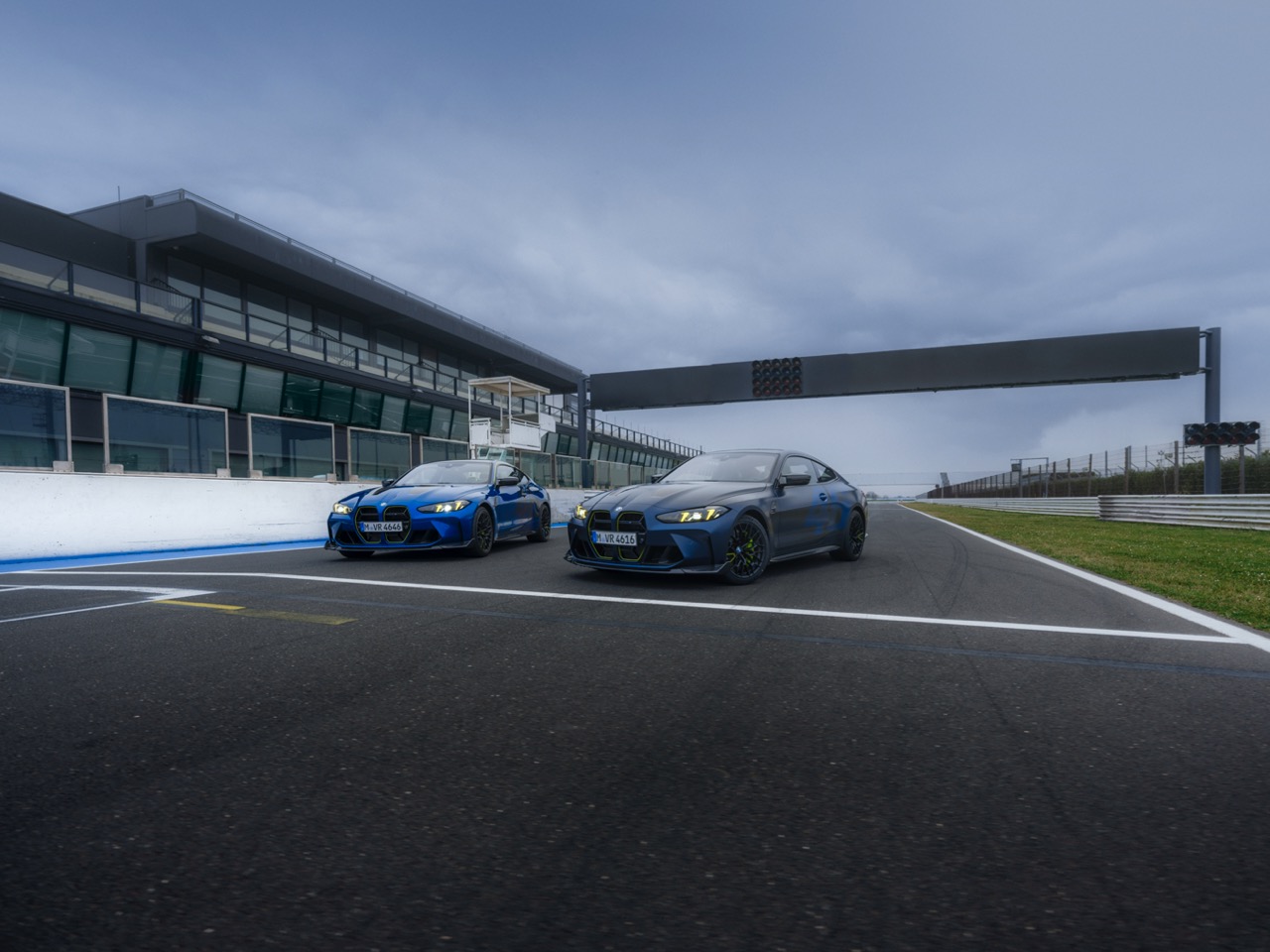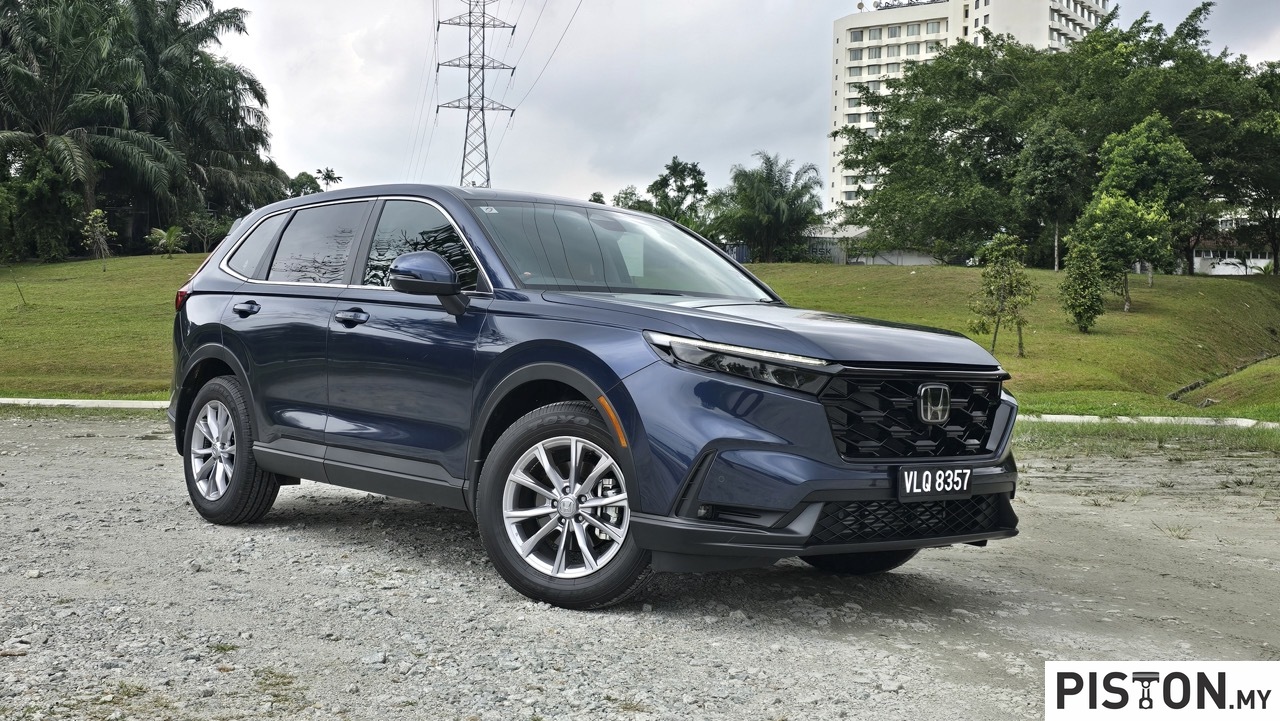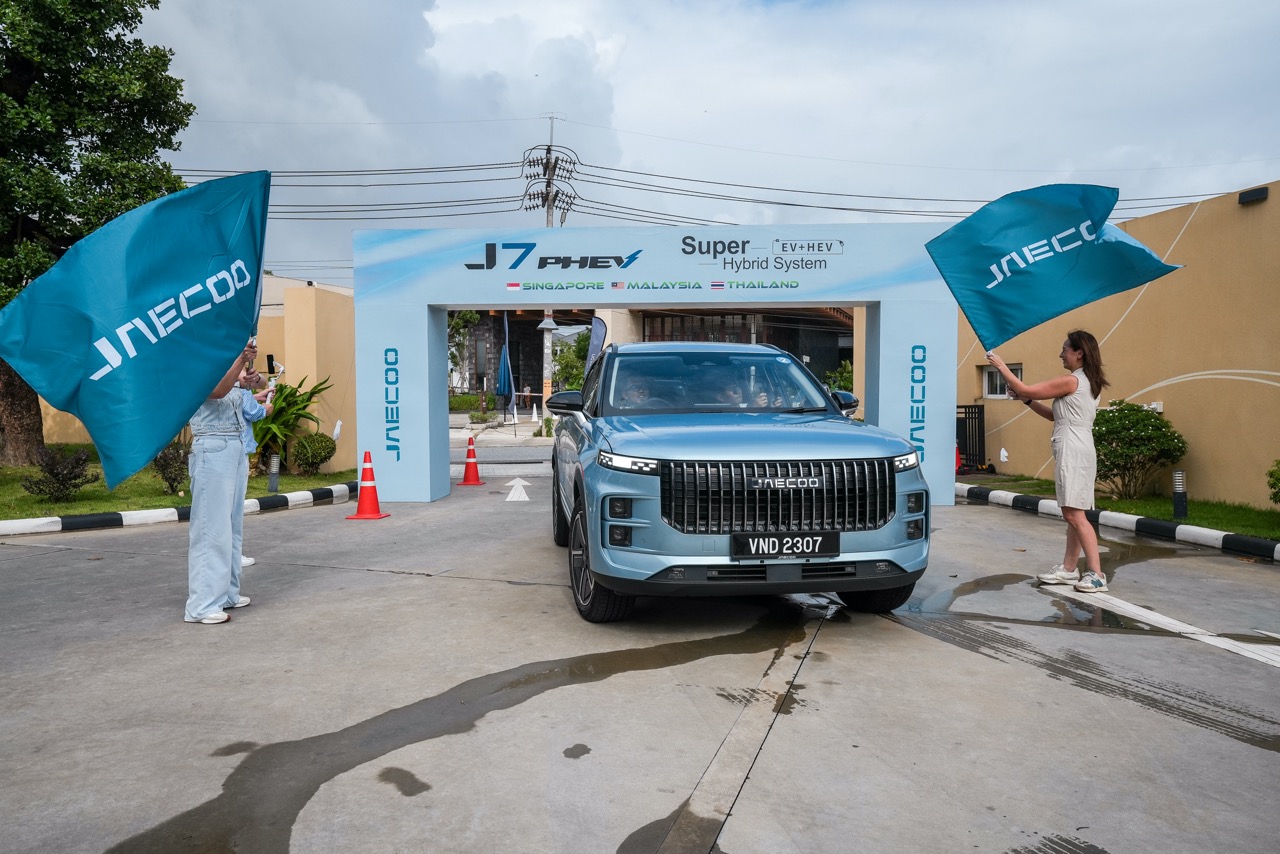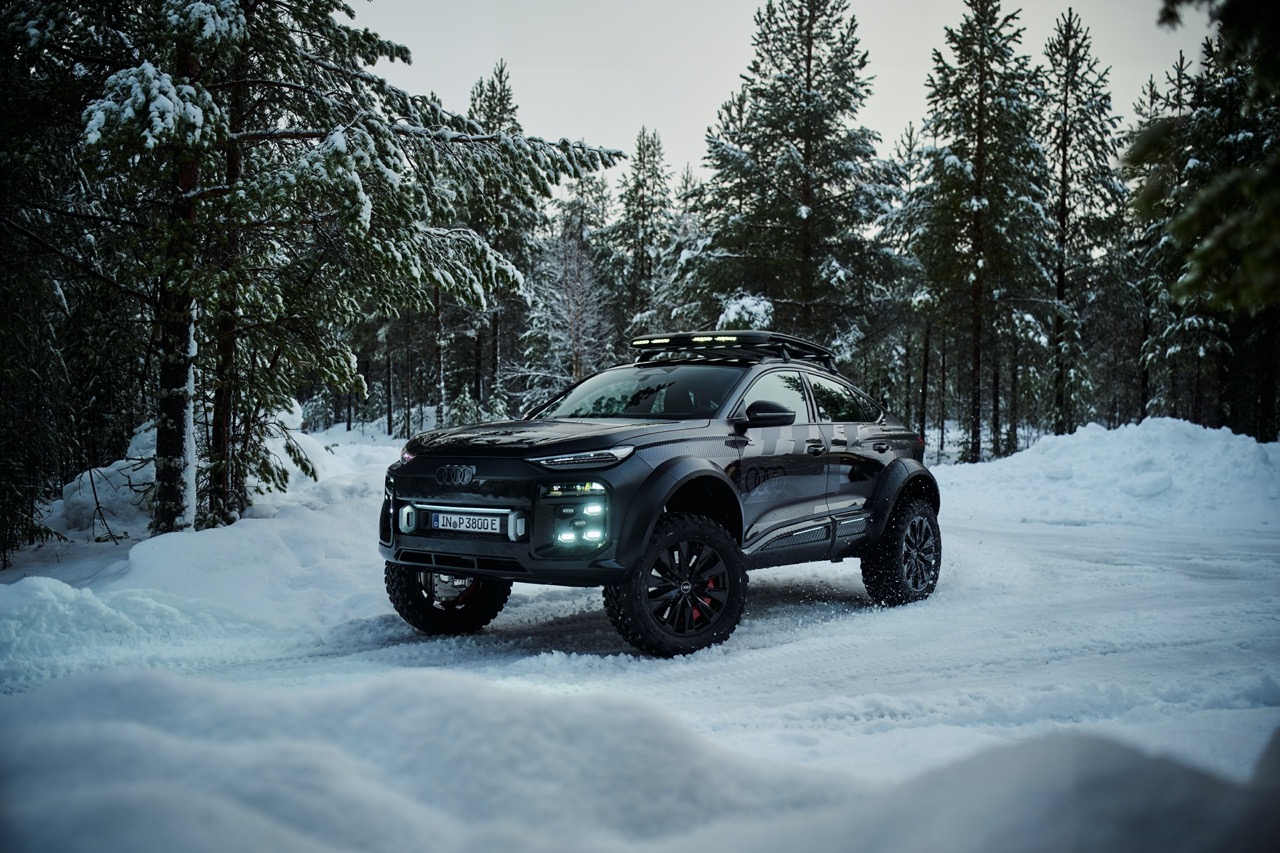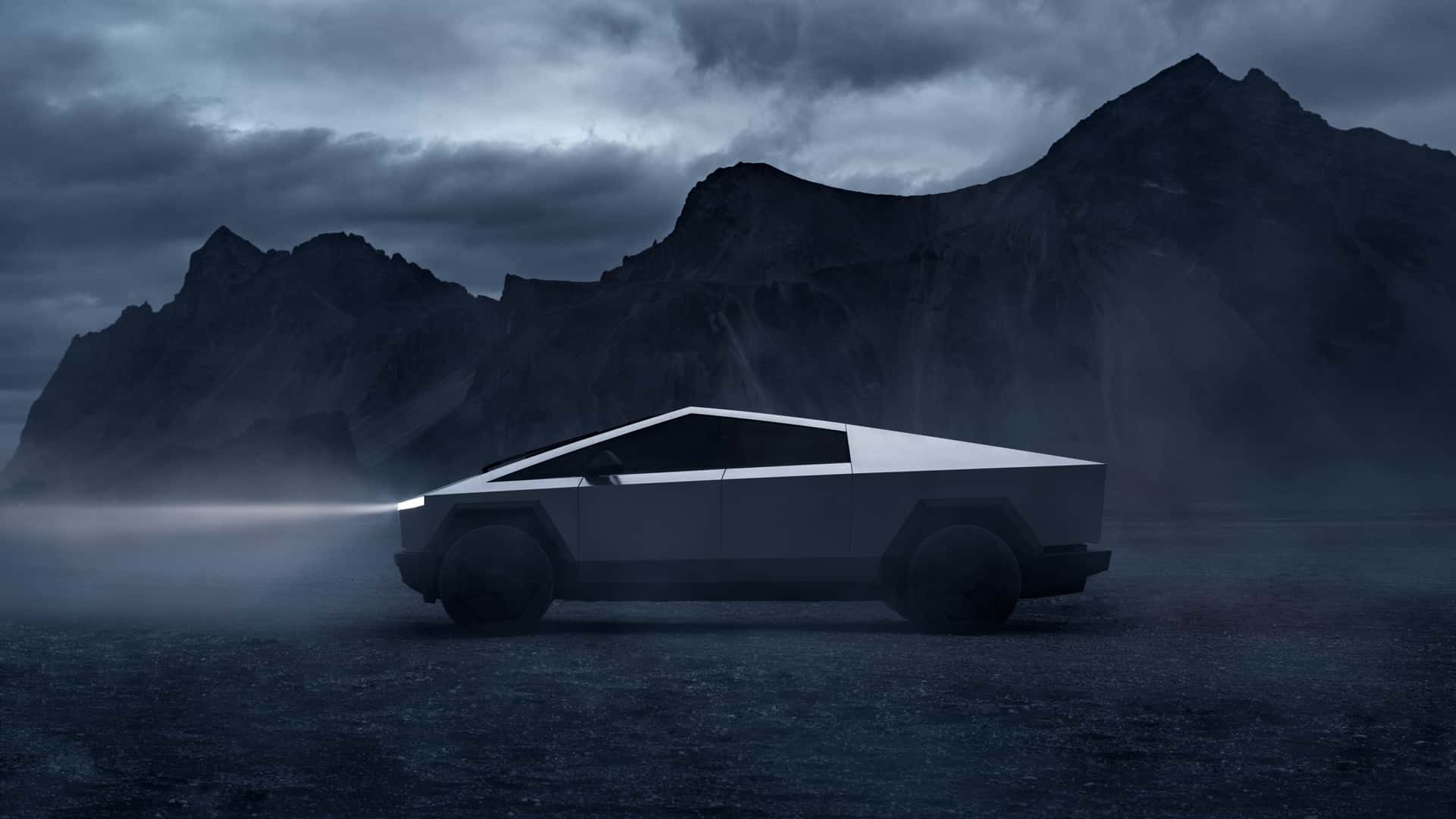BMW has officially introduced the highly anticipated M3 CS Touring, a limited-run, high-performance variant of its renowned M3 Touring. The world premiere takes place at the legendary Mount Panorama Circuit in Bathurst, Australia, as part of the Bathurst 12 Hour endurance race program on January 30, 2025. Deliveries are set to begin in March 2025 across Europe, Australia, Japan, and South Korea, with Germany identified as the key market. Production of the special edition will occur alongside other M3 models at BMW’s Munich plant.

Race-Ready Powertrain and Performance
Under the hood, the M3 CS Touring boasts a 3.0-litre six-cylinder inline engine equipped with M TwinTurbo technology, designed for high-revving performance. Featuring a reinforced crankcase, forged lightweight crankshaft, and 3D-printed cylinder head core, the engine has been optimised for track performance. The cooling and oil systems are engineered to handle extreme conditions, ensuring durability under sustained high loads.

With an increased boost pressure of 2.1 bar and enhanced engine management, the power output climbs to 550hp with 650Nm of torque available between 2,750 and 5,950 rpm. This enables a blistering 0-100km/h sprint in just 3.5 seconds and a 0-200km/h run in 11.7 seconds. The electronically limited top speed stands at 300km/h, courtesy of the standard M Driver’s Package.

The performance experience is further amplified by an M-specific exhaust system featuring electrically controlled flaps, a titanium rear silencer, and dual matte black tailpipes, all contributing to an aggressive soundtrack that varies depending on the selected drive mode.
Precision-Optimised Drivetrain and Handling
Power is transmitted via an eight-speed M Steptronic transmission with Drivelogic, offering three distinct shift settings. The M xDrive all-wheel-drive system, coupled with an Active M Differential, ensures optimal power distribution, enhancing traction and agility. Drivers can select between 4WD, 4WD Sport, or pure rear-wheel-drive (2WD) mode with DSC deactivated for an unfiltered driving experience.
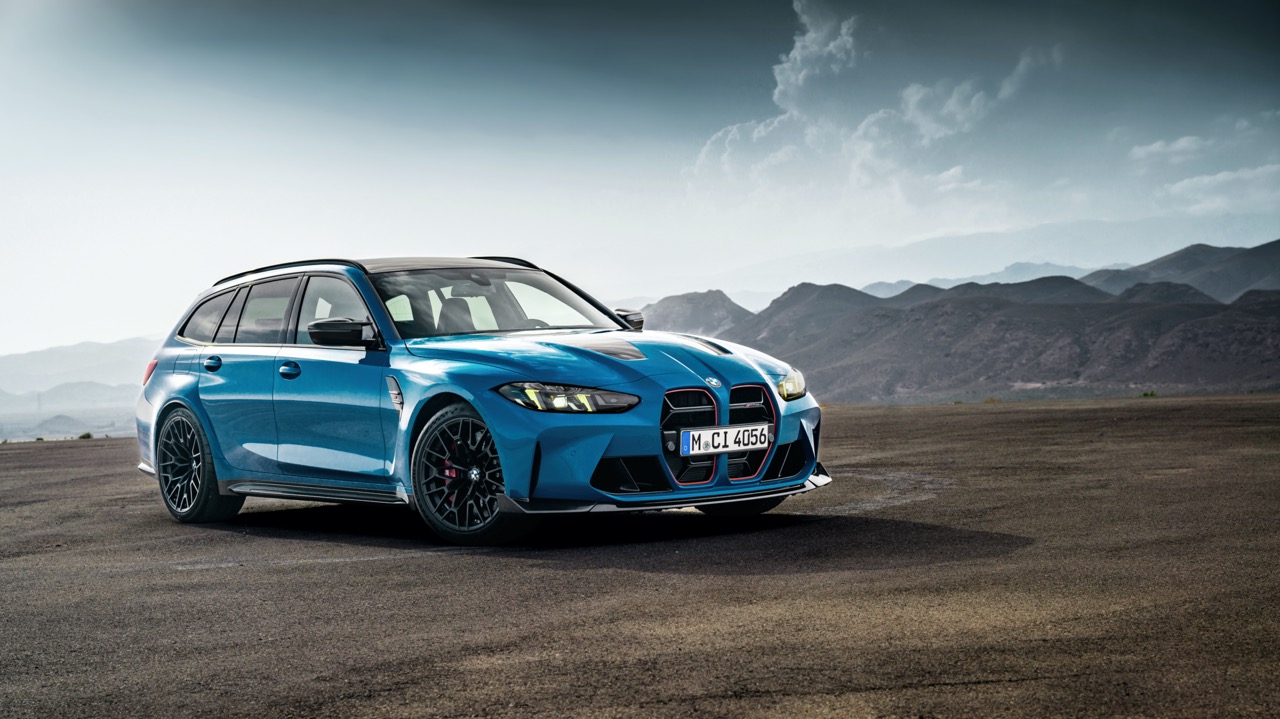
To match the uprated powertrain, BMW has refined the chassis setup specifically for the M3 CS Touring. The adaptive M suspension, M Servotronic steering, and integrated braking system all receive bespoke tuning, delivering sharper responses on both road and track. Standard M Compound brakes with red or black callipers provide impressive stopping power, with optional M Carbon ceramic brakes available in red or matte gold.

The car rolls on forged M light-alloy wheels in an exclusive double-spoke design, finished in matte Gold Bronze or matte Black. These measure 19 inches at the front and 20 inches at the rear, with track tyres fitted as standard, although customers can opt for sport tyres at no extra cost.
Lightweight Construction and Aerodynamics
Intelligent weight-saving measures contribute to the M3 CS Touring’s enhanced performance. Carbon fibre-reinforced plastic (CFRP) is extensively used in the bonnet, front splitter, air intakes, mirror caps, and rear diffuser. Inside, M Carbon bucket seats, CFRP shift paddles, interior trims, and a lightweight centre console further reduce mass. Overall, these measures shave approximately 15 kg compared to the standard M3 Competition Touring with M xDrive.

Aerodynamic efficiency is also a key focus, with the front-end design featuring a frameless BMW M kidney grille with red contour lines, an aggressive front splitter, and an exclusive high-gloss black roof and roof spoiler. The LED headlights emit a striking yellow light, reminiscent of BMW’s GT racing cars.
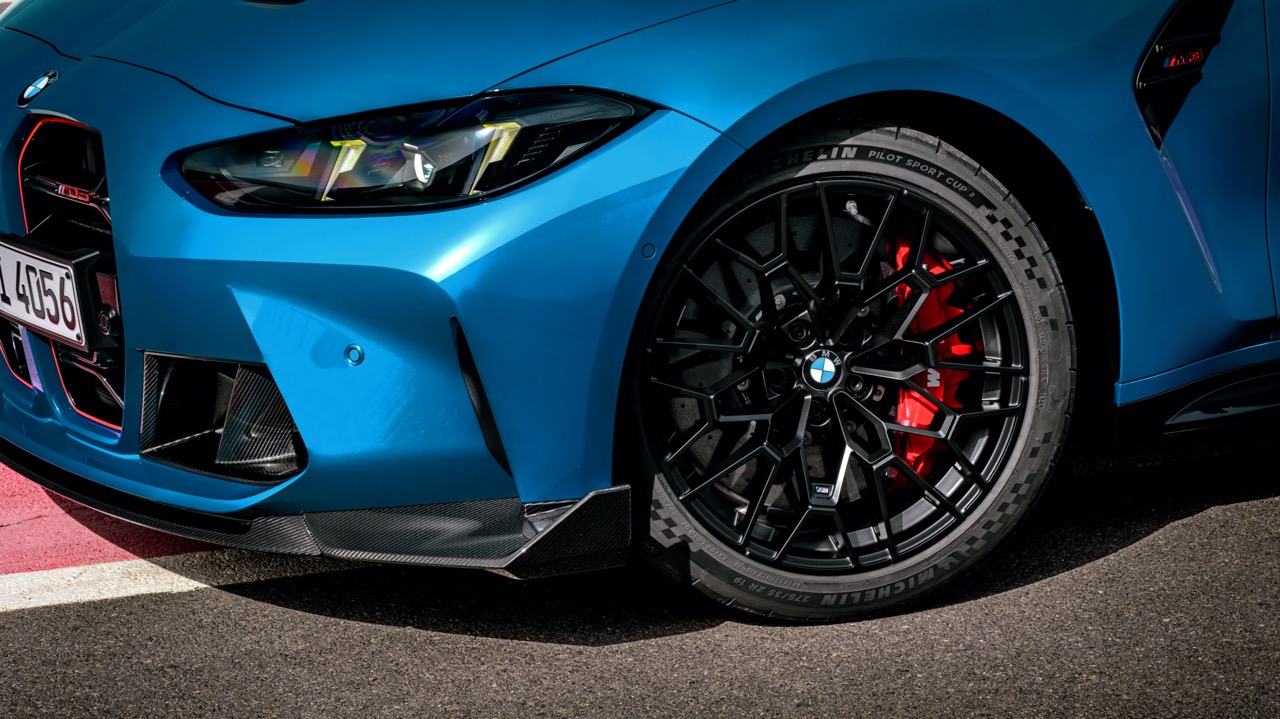
The model will be offered in an exclusive colour palette, including British Racing Green, Laguna Seca Blue, Frozen Solid White, and Sapphire Black metallic.
Driver-Centric Interior with Motorsport Influence
Inside, the M3 CS Touring maintains BMW’s signature driver-focused cockpit, complemented by high-tech and luxury features. Electrically adjustable and heated M Carbon bucket seats in black and red Merino leather provide superior support. The M Alcantara steering wheel features a red 12 o’clock marker, while M seat belts and “CS” badging on the centre console reinforce the performance aesthetic.
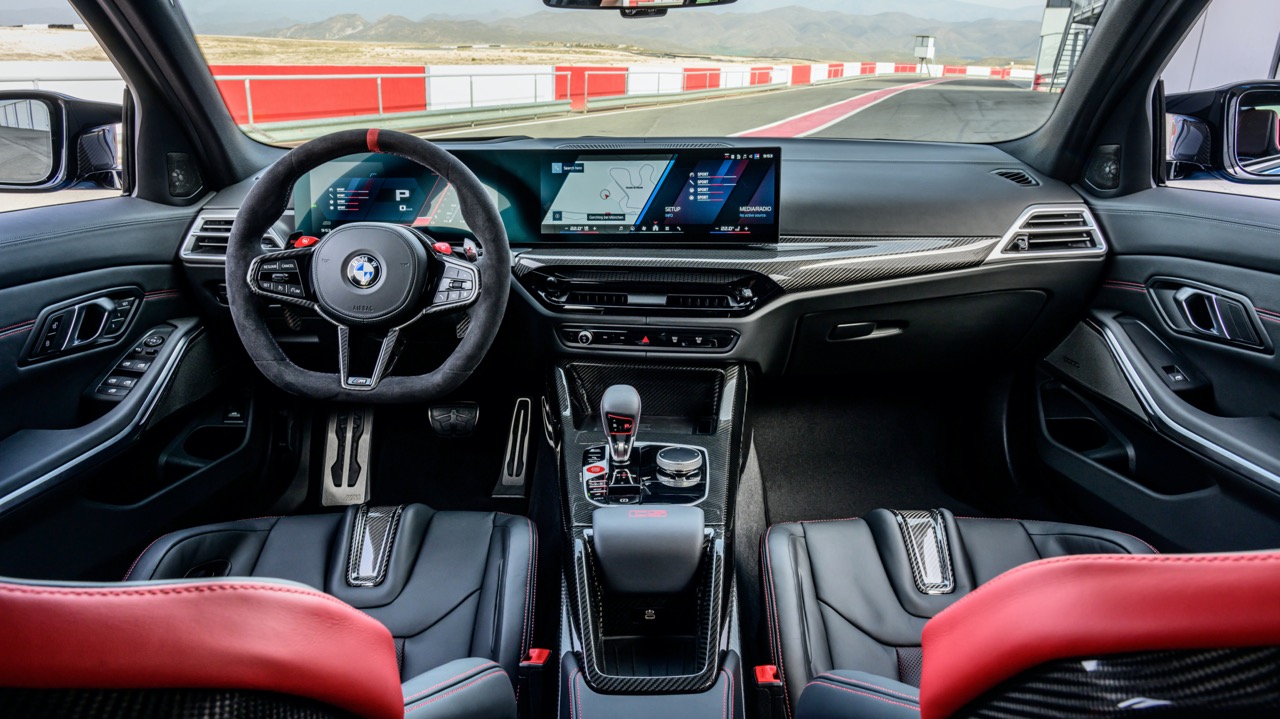
The M Setup button allows direct control over the engine, suspension, steering, braking, and M xDrive configurations. Two personalised drive modes can be saved and accessed via the M buttons on the steering wheel. Standard equipment includes M Drive Professional with track-focused features such as M Drift Analyzer and M Lap Timer.
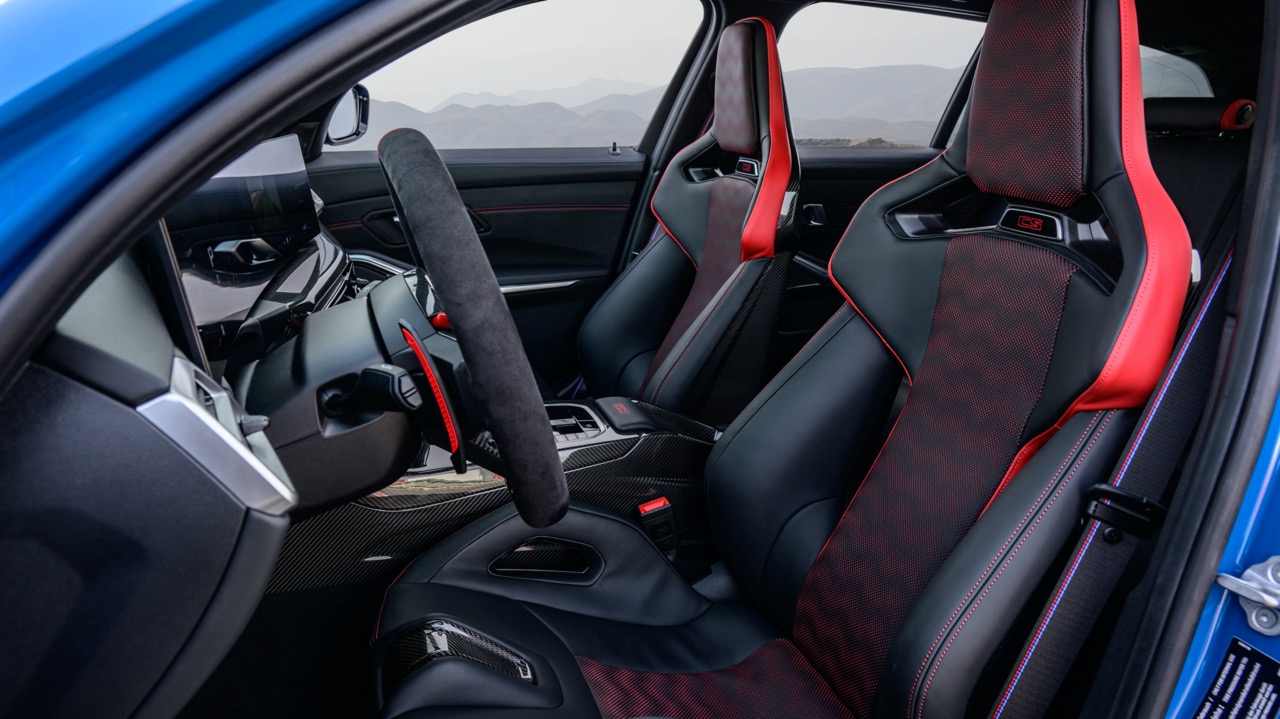
With its combination of power, precision handling, lightweight construction, and versatile Touring body style, the BMW M3 CS Touring offers an exhilarating yet practical performance machine for driving enthusiasts worldwide.




